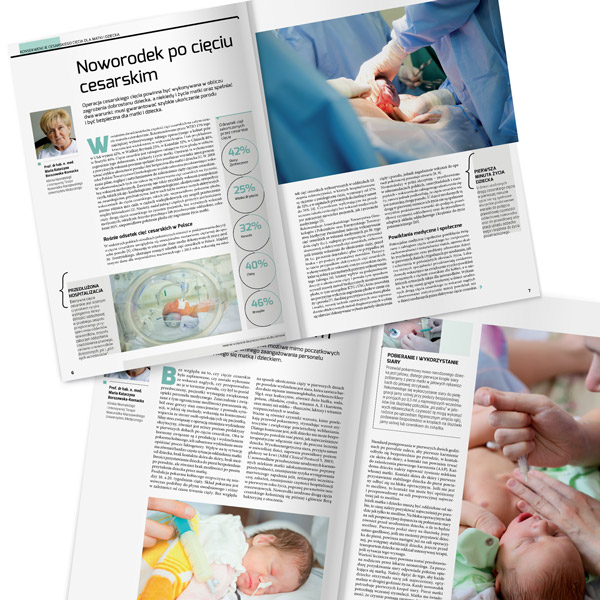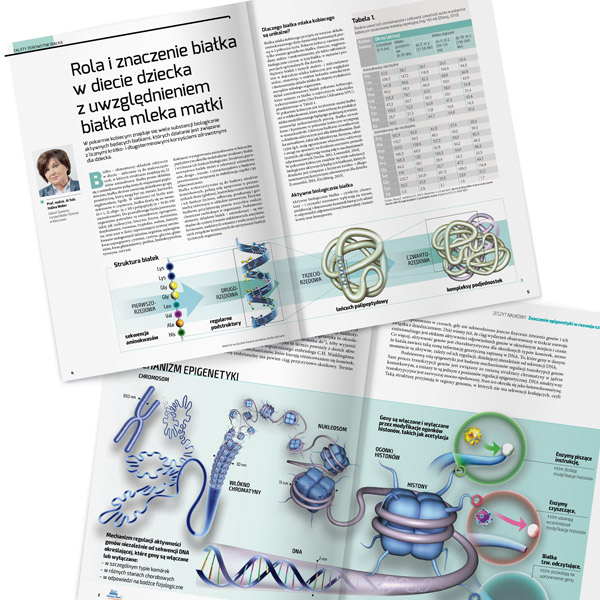
But hitting on a difficult matter is not the same as hitting the wall. Although working papers are indeed a specific kind of a magazine (they are to present and promote scientific and research output), nothing is impossible for our agency. We face such challenges with confidence and we are proud to share the results 🙂

We are, for instance, in continuous cooperation with Nestle – we do for them working papers about newborns, addressed to medical interns and midwives. The articles are contributed by the best Polish experts in various fields, while we are responsible for the editing and graphic design. No doubt this type of magazine requires a lot of time and attention; oftentimes you need to make some additional research to get deeper into the convoluted scientific terminology. It doesn’t mean, however, that the job cannot be done by an ordinary mortal or that one has to have medical education. An outsider’s point of view has its advantages. An editor, aware of the importance of the publication and of the responsibility he carries, will often be far more insightful and alert. “I had to correct Latin or English scientific terms many times, because they were misspelled,” says Bożena Makowska, Nestle working papers managing editor. “It’s also often the case that articles by different doctors touch upon the same issues, and we need to contact them to modify the texts, so that there are no repetitions. So the key element in editing such articles is vigilance.
Publishing working papers has its own rules which the editor must know and respect. But the editor’s job goes beyond looking after the words. “I also choose photos for the magazine,” Bożena adds. “I am the one who knows best what the articles are about, and the illustrations must be strictly related to the messages, which is why I don’t give a free hand to graphic designers and don’t look for images on shutterstock, but in photo agencies all over the world.”

Creating an infographic is even more arduous. “We can’t show e.g. general anatomy of the kidney, because the illustration is for people with medical education. The image must be much more detailed,” the editor explains. “Before I propose anything to the author of the article, I search through many medical schemes, I draw from them whatever is relevant for and coherent with the article and try to put it all together. Only when the image is accepted by the medical doctor do I ask the designer to create an infographic.
When taking care of such highly specialized publication, the editor is paddling his own canoe – but many hours of hard work bring impressive results. The best proof for that is our clients’ satisfaction and more new orders coming in 🙂
Here you can see the example our publication for Nestle:
Kategorie: power of contentic